Project Eden: a new star-studded luxury resort opens by Lake Garda
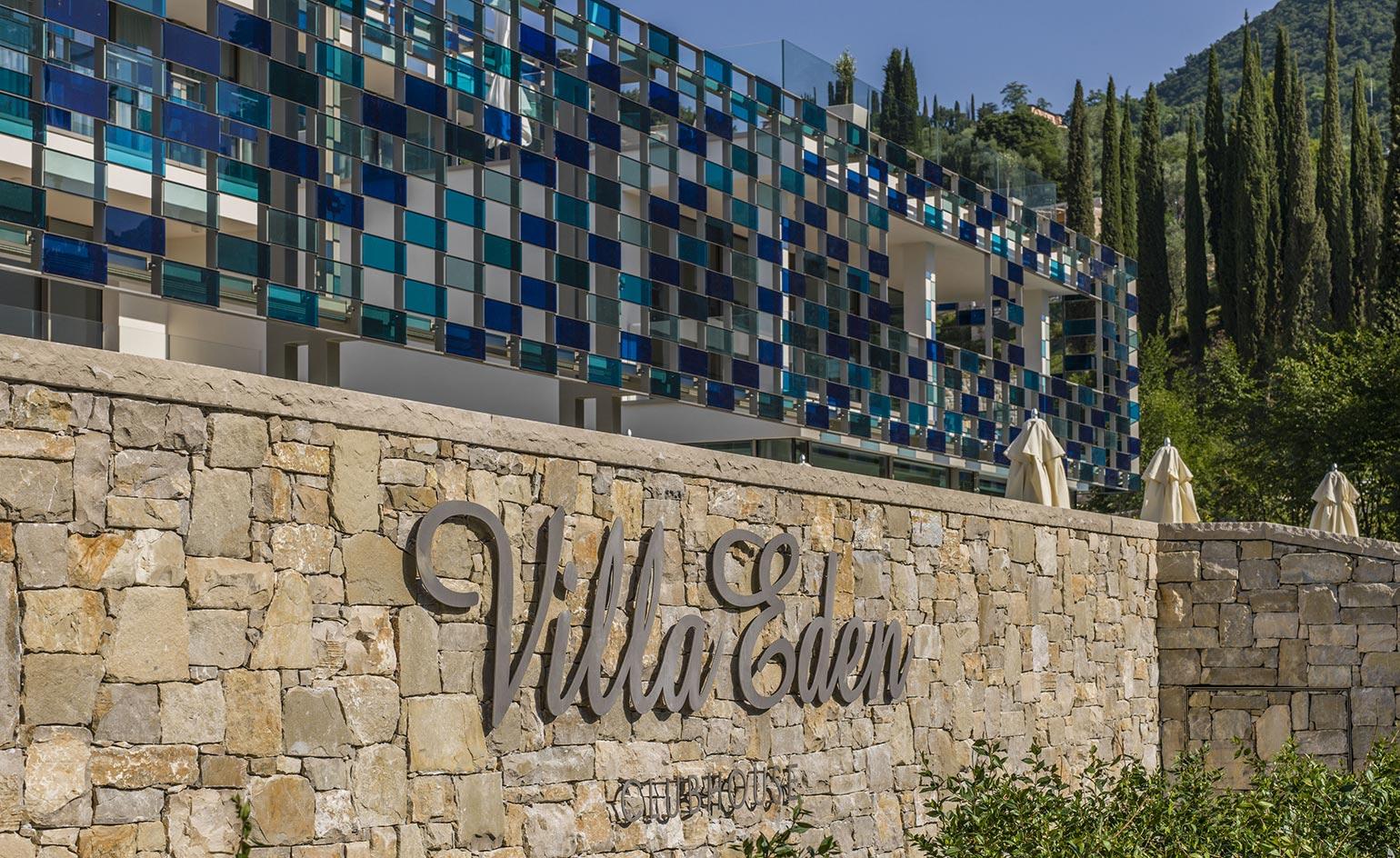
Lake Como may be the most well known of the Italian lakes, but its bigger sister, Lake Garda, wants for nothing in comparison, in terms of style and natural beauty. This is the largest lake in Italy, a popular international sports hub and a coveted holiday destination for many central Europeans - especially Swiss, Austrian and southern German - who descend in numbers during the summer months to sample the good Italian food and weather.
The hills and waterside surrounding the small town of Gardone are dotted with grand, heritage Lombardian resorts, traditional Italian houses and old limonaias - the area's typical Italian lemon tree grove farmhouse. It is within this picturesque scenery of classic grandeur that Austrian developers Signa spotted an opportunity for a new, ultra-modern private luxury resort - and Villa Eden was born.
Seeking to create a stylish composition of different architectural languages - rather than employ a single architect to work on the whole - Signa approached a star-studded team of architects for the complex's 11 buildings: Matteo Thun, Richard Meier, David Chipperfield and Sphere architects worked on the architecture and Enzo Enea on the landscape design.
Matteo Thun was the first one on board and helped spearhead the project - he had been visiting the Lake Garda since his childhood and felt a strong connection to the land and the area's famous wind, the Ora. He designed Villa Eden's main clubhouse (which includes a small boutique hotel, a restaurant and bar for members and a spa), a private house and a small apartment building, called the Landmark, which is still in construction. His approach was about blending into the landscape, taking his design cues from the rich Italian nature and the area's 'genius loci'. 'Architecture should disappear,' he explains.
A similar approach was adopted by David Chipperfield's team, who worked on two private houses that draw on the architecture of the area's limonaias. Recreating their defining vertical columns in an abstract way on the houses' timber facades, Chipperfield clearly pays respect to the local vernacular.
The landscape design involved saving and rearranging the site's existing olive trees. All outdoors areas were treated as a single space, avoiding private outdoors areas for each villa. The aim was to produce a coherent, seamless surrounding that feels at home in this Mediterranean setting and doesn't distract from the hillside development's long views of the lake. 'We worked to frame and integrate the view,' explains Enea.
This was taken on board on all house designs, and worked particularly well with Sphere managing partner Marc Mark's overall design approach. 'The landscape comes first,' he says. 'We thought - no gardens. We didn't want any fences and private space seeping into the public areas.' The practice was involved in the design of three villas, one of which sits at the development's highest point, unashamedly modern yet fittingly discreet, striking a careful balance between the environment's old and new elements. 'We wanted to have this tension, between the very modern villa and its historical context,' he explains.
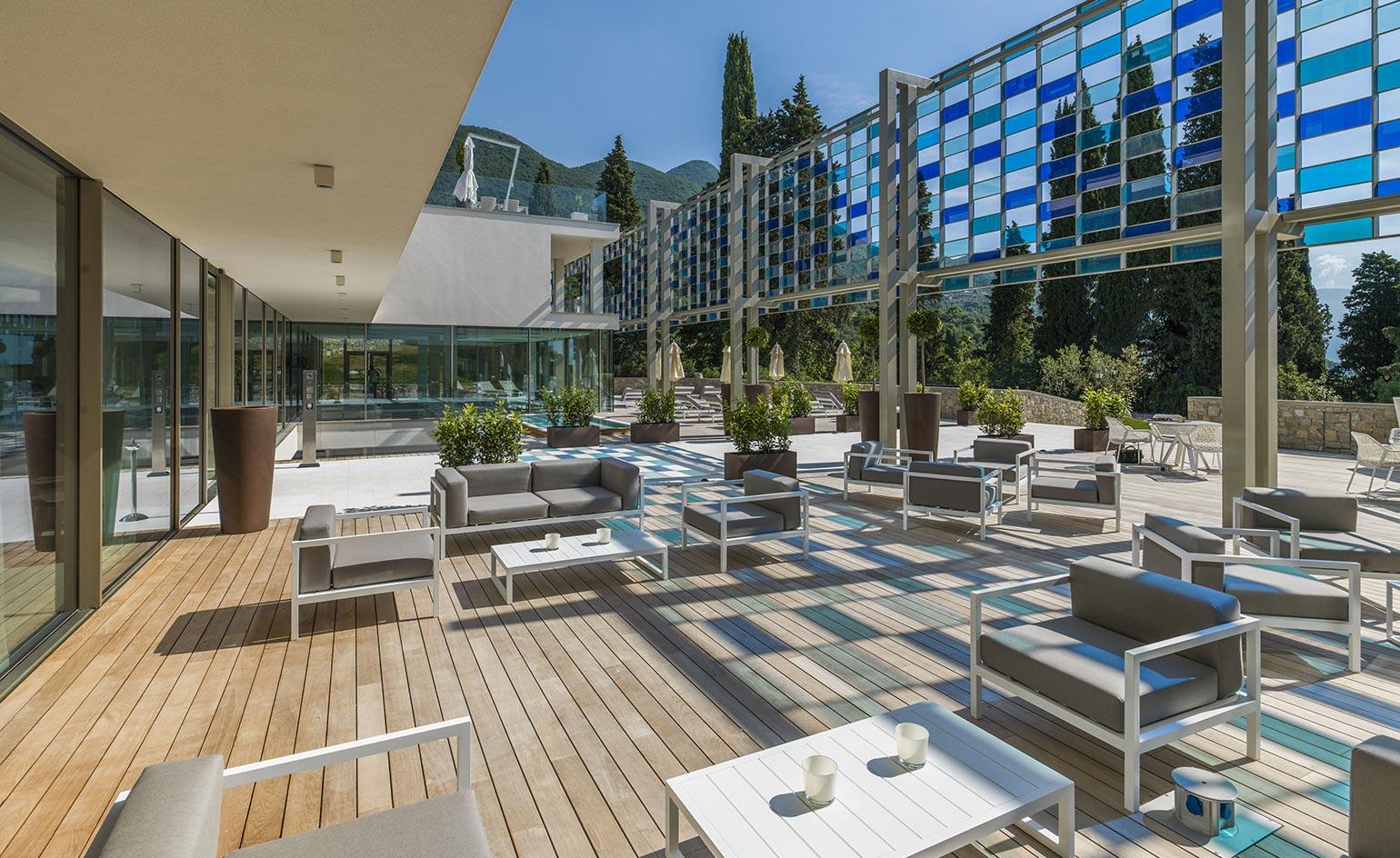
The clubhouse building, designed by Matteo Thun, includes a small hotel, a restaurant and a spa, which will be open to members.
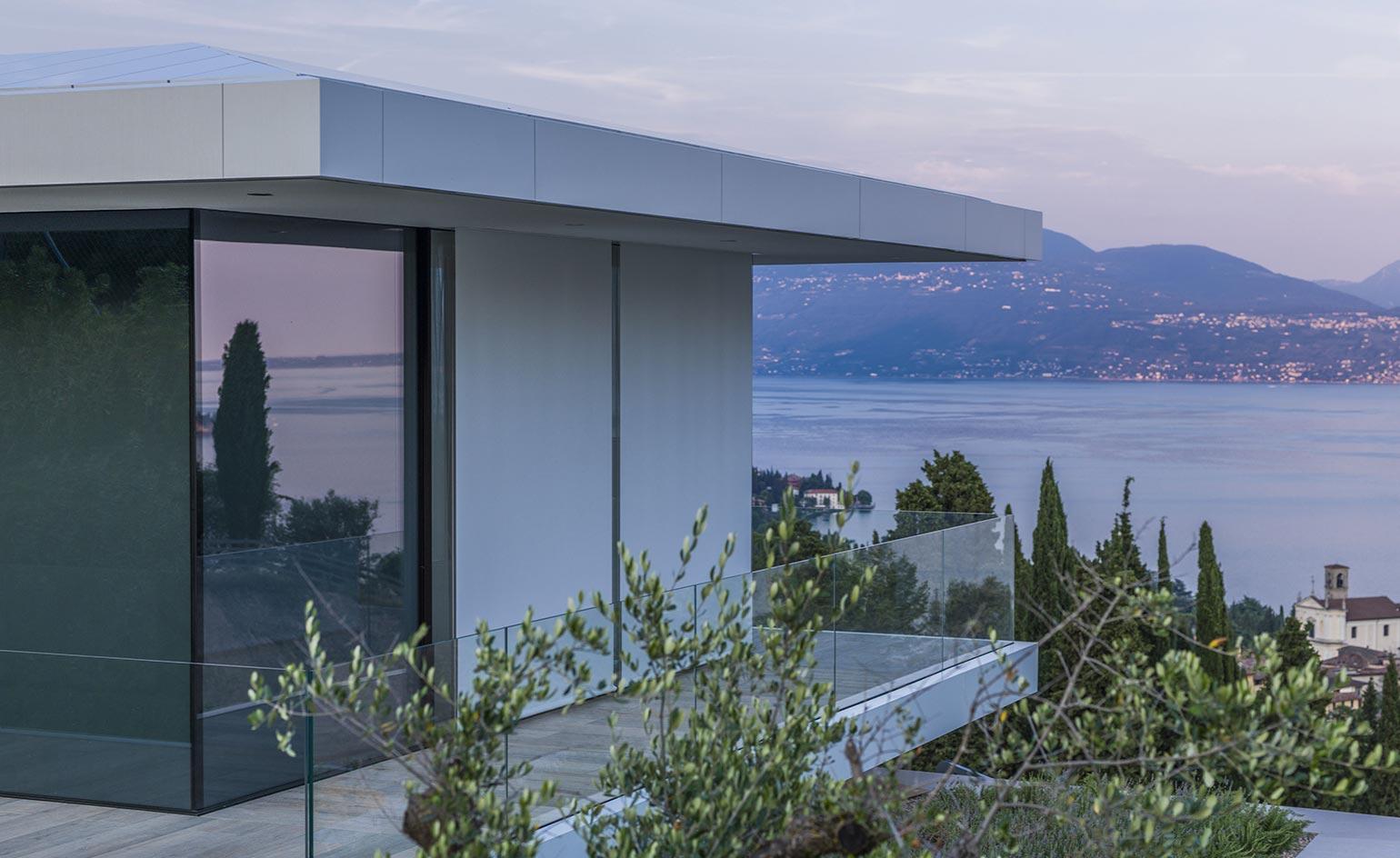
Thun also designed one of the complex's private houses, which has already welcomed its new owners.
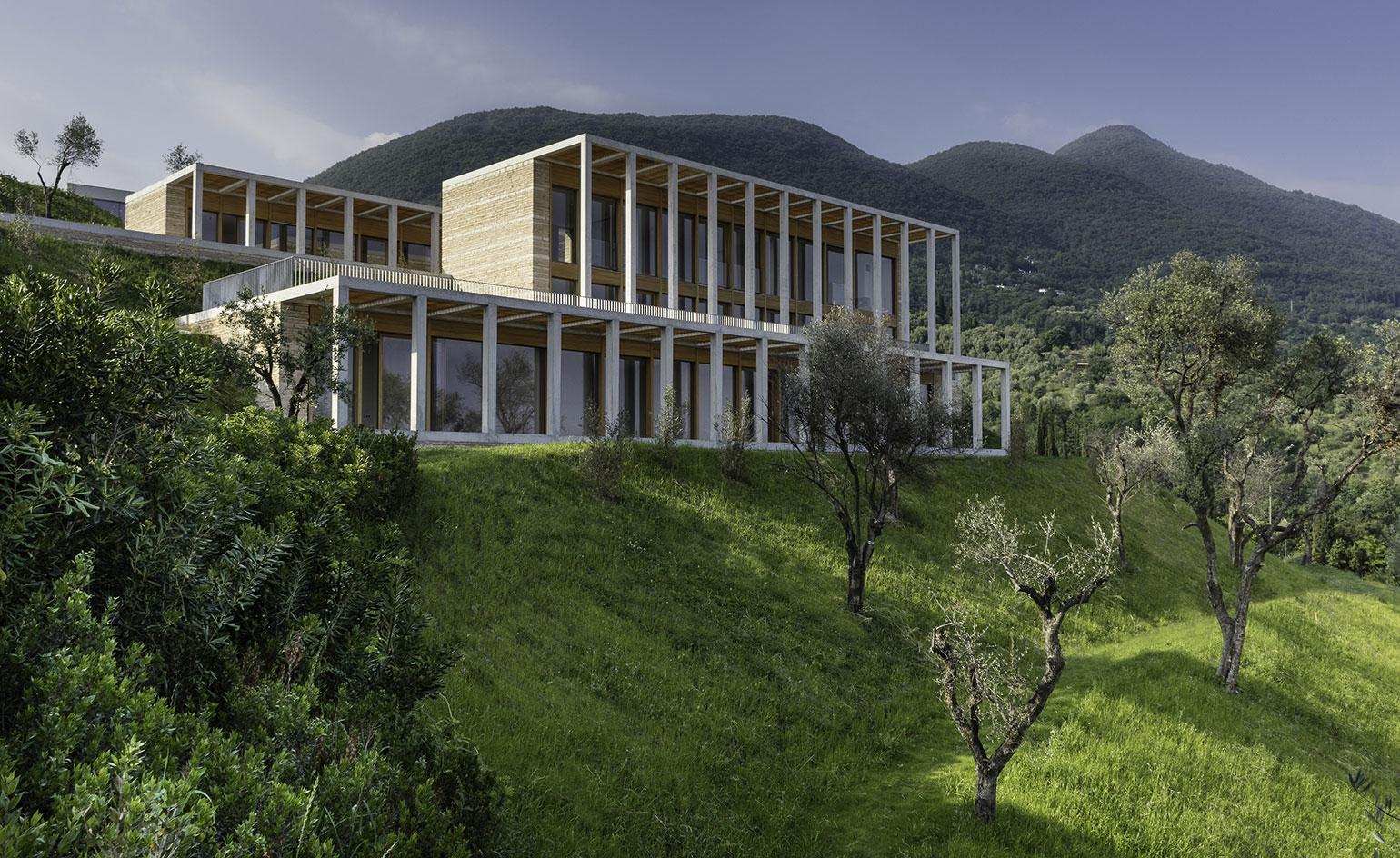
David Chipperfield and his team worked on two new private houses for Villa Eden.
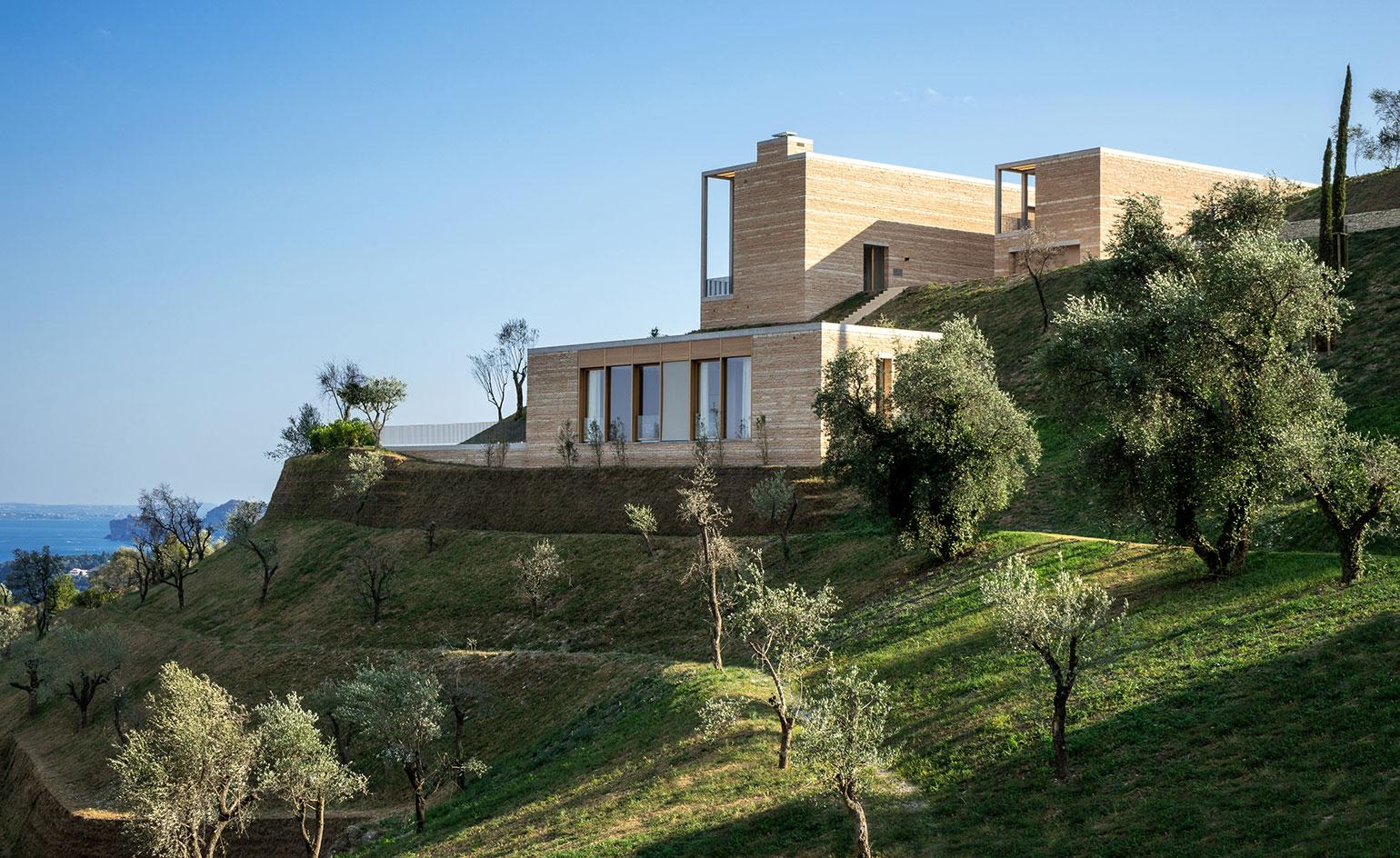
The two structures share key characteristics that were inspired by the Lake Garda's traditional limonaias (lemon groves).
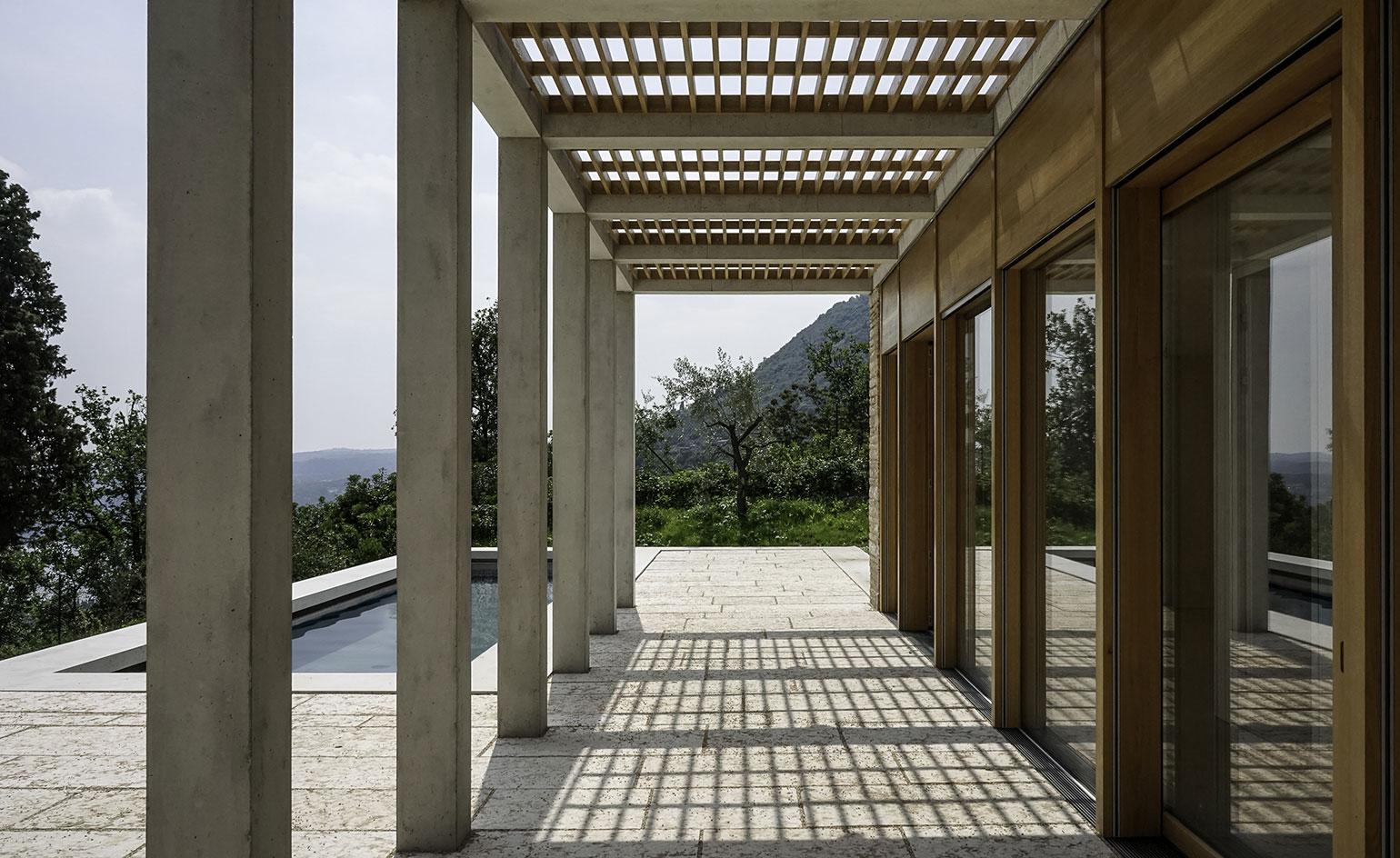
The timber and concrete structure that defines the design's main facade references local architecture...

...but also helps provide shade and secure privacy, without obstructing the views of the lake.

Chipperfield's contribution to Villa Eden uses materials that feel at home in the Mediterranean environment, like timber and local stone.
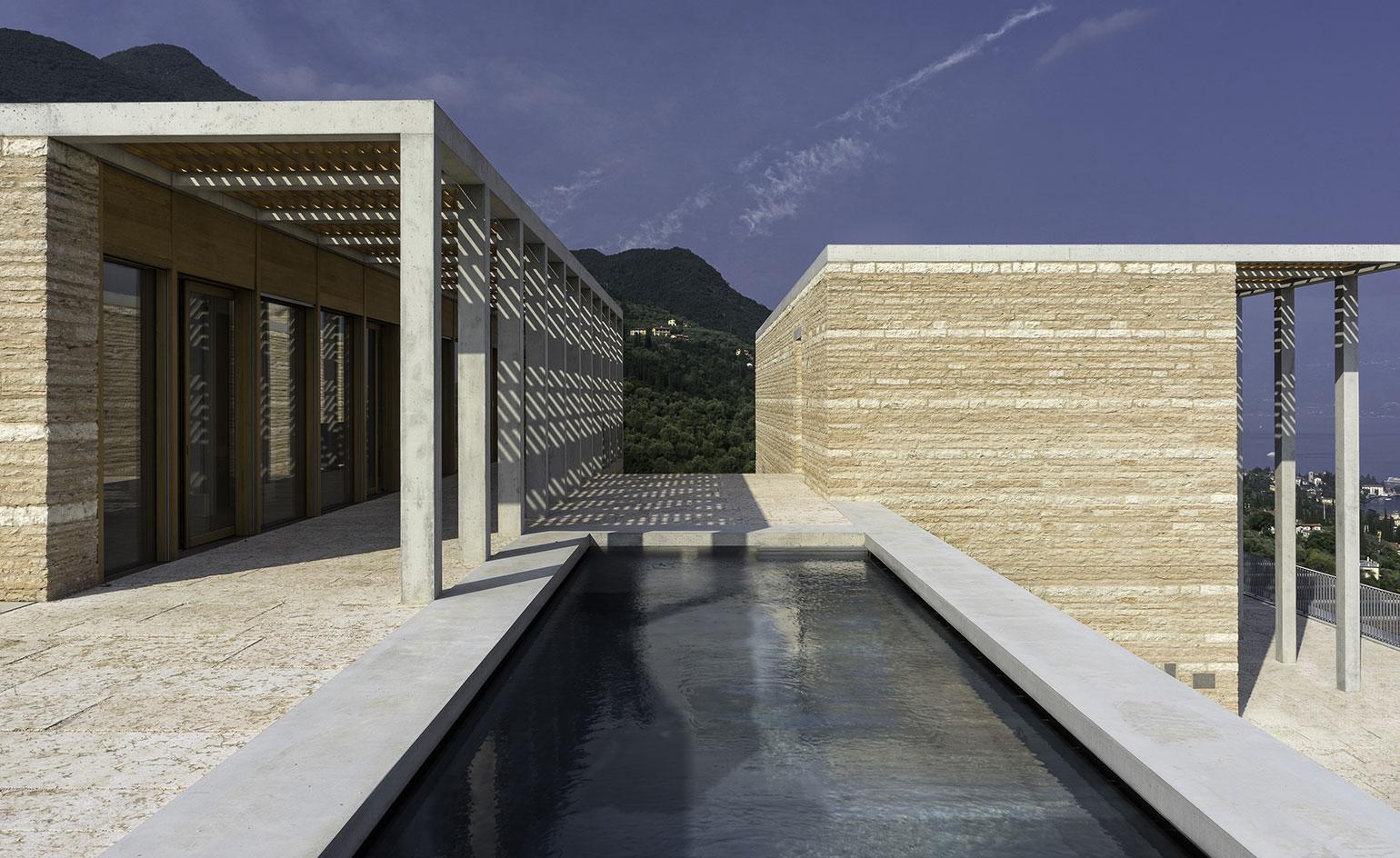
The villas' outdoor areas were carefully planned. The complex doesn't allow private gardens for each house, but the architects ensured some areas are protected and not overlooked by neighbouring buildings.
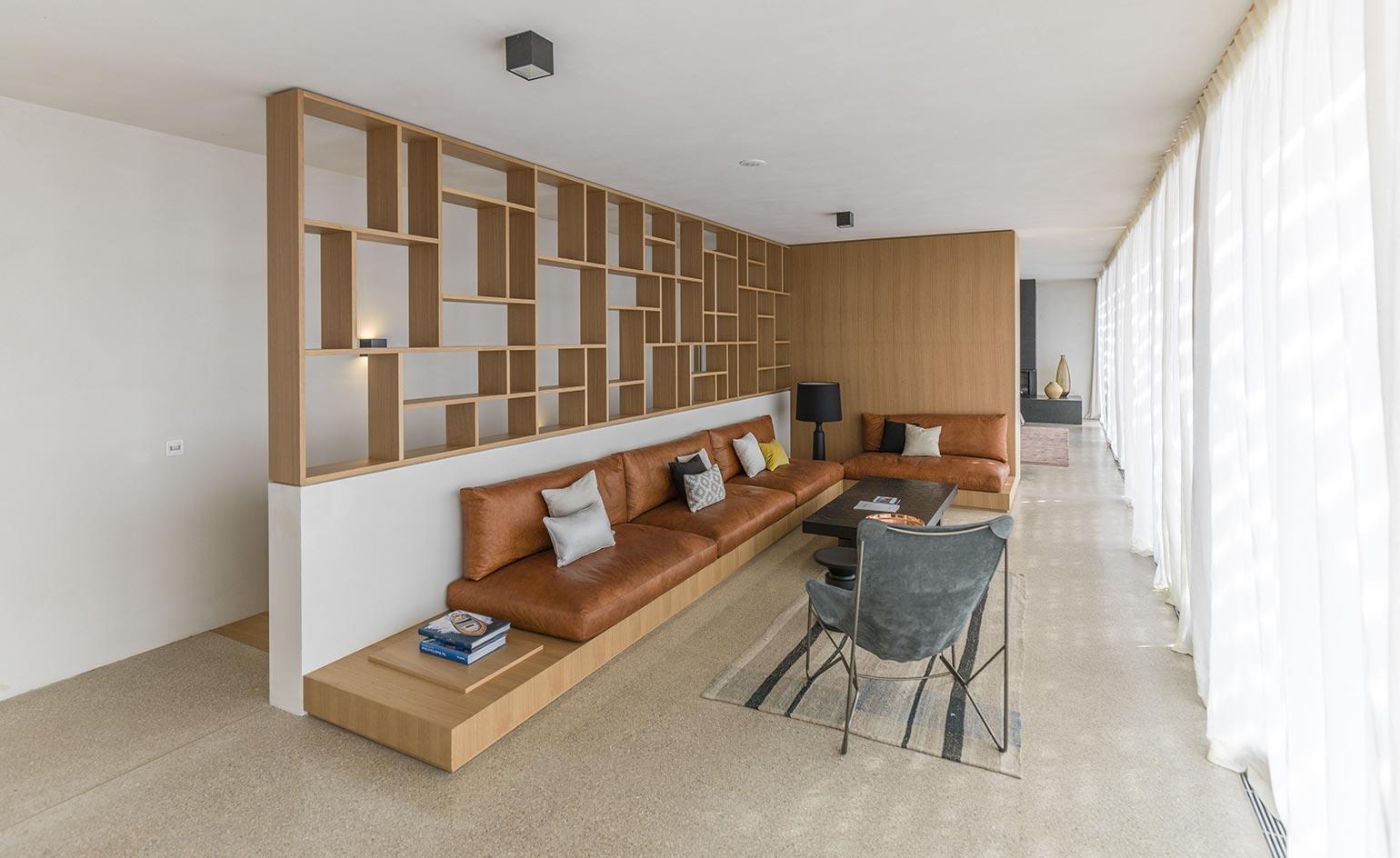
Inside, all main spaces open up towards the site's stunning views of Lake Garda.
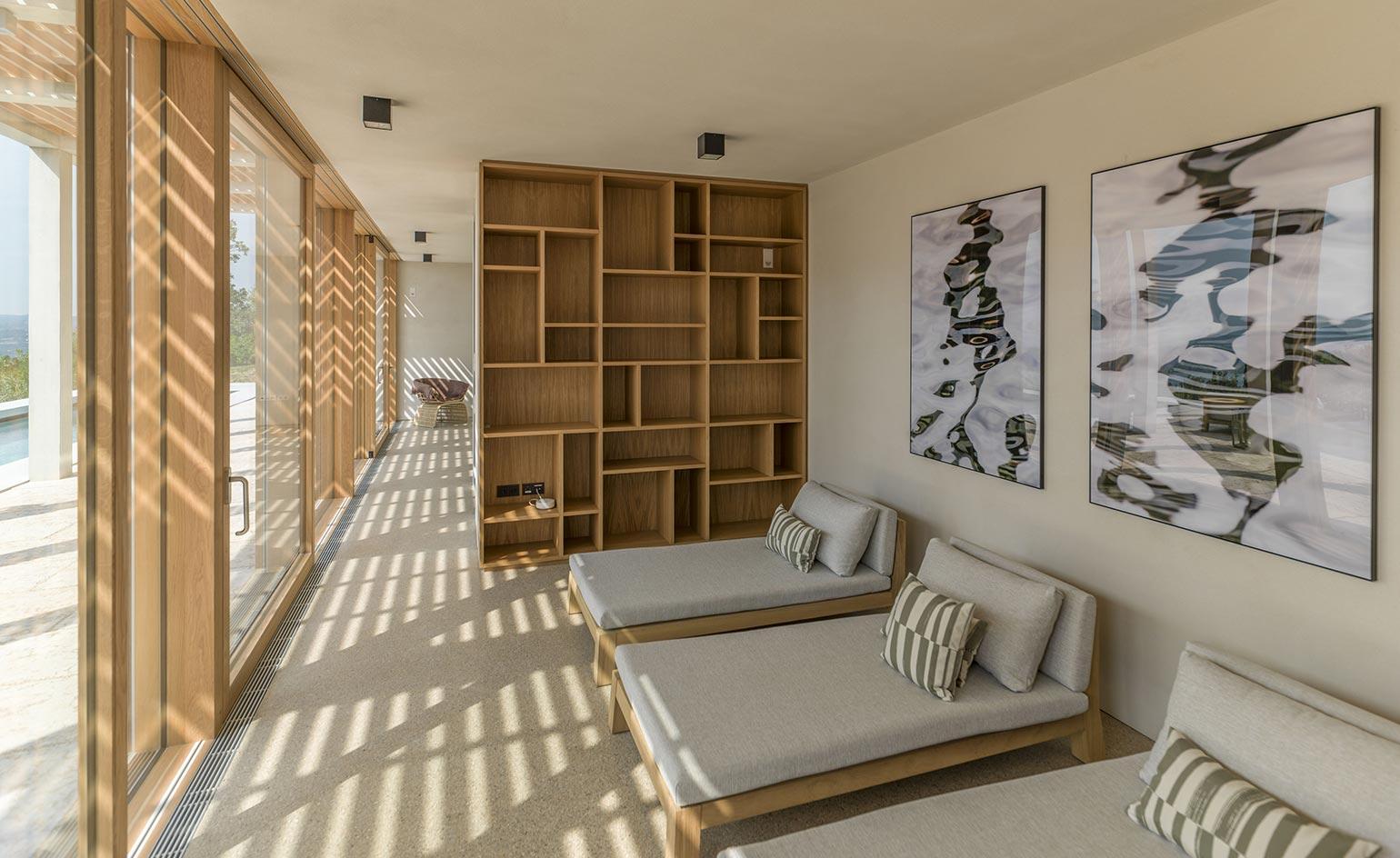
The villas' linear arrangement over two floors means that public spaces and bedrooms share the same unobstracted views.
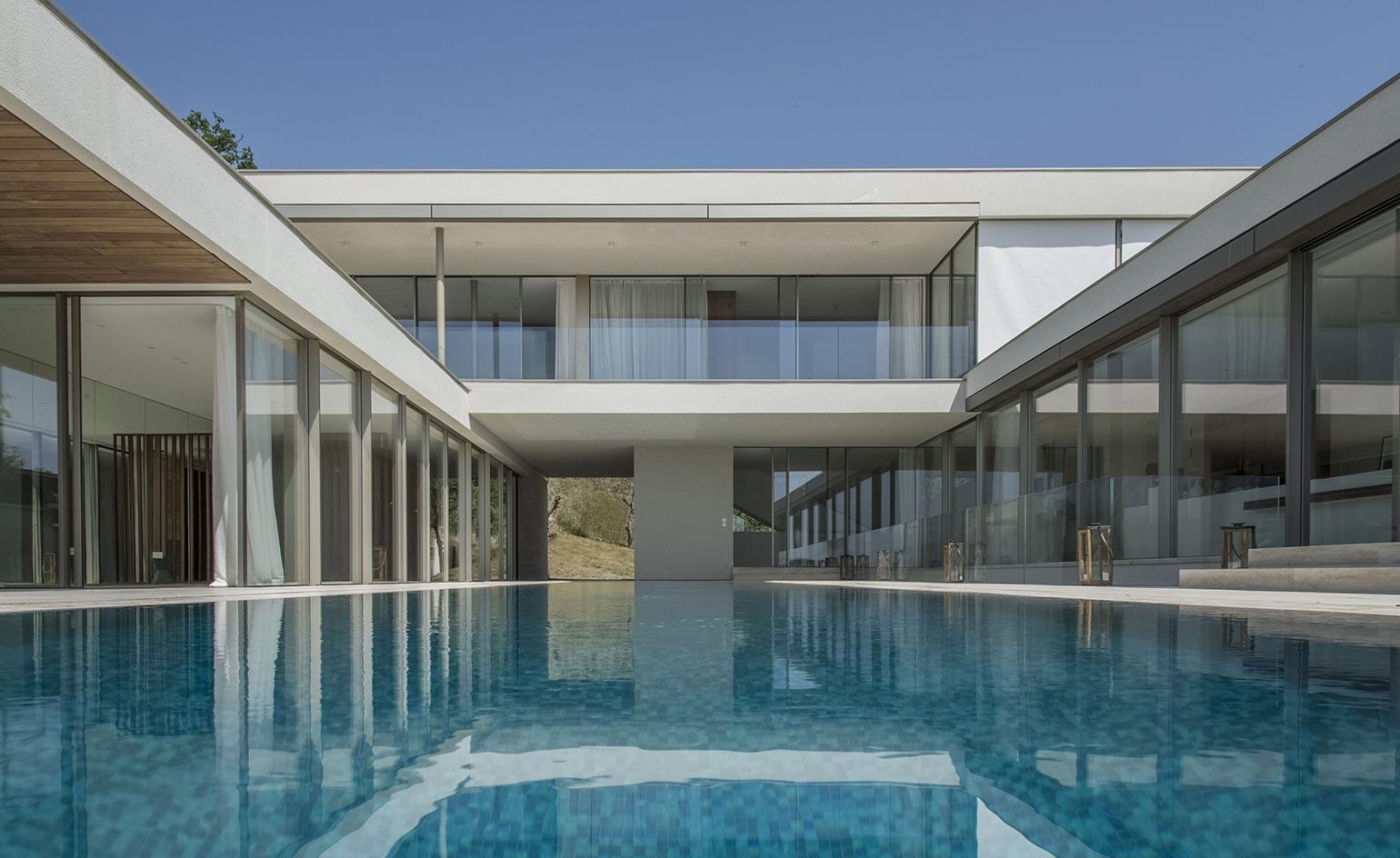
Sphere architects worked on three houses in Villa Eden, including the complex's largest property, pictured here.

The house sits at the development's highest point and was designed as a composition of long, low columes and outdoors spaces.
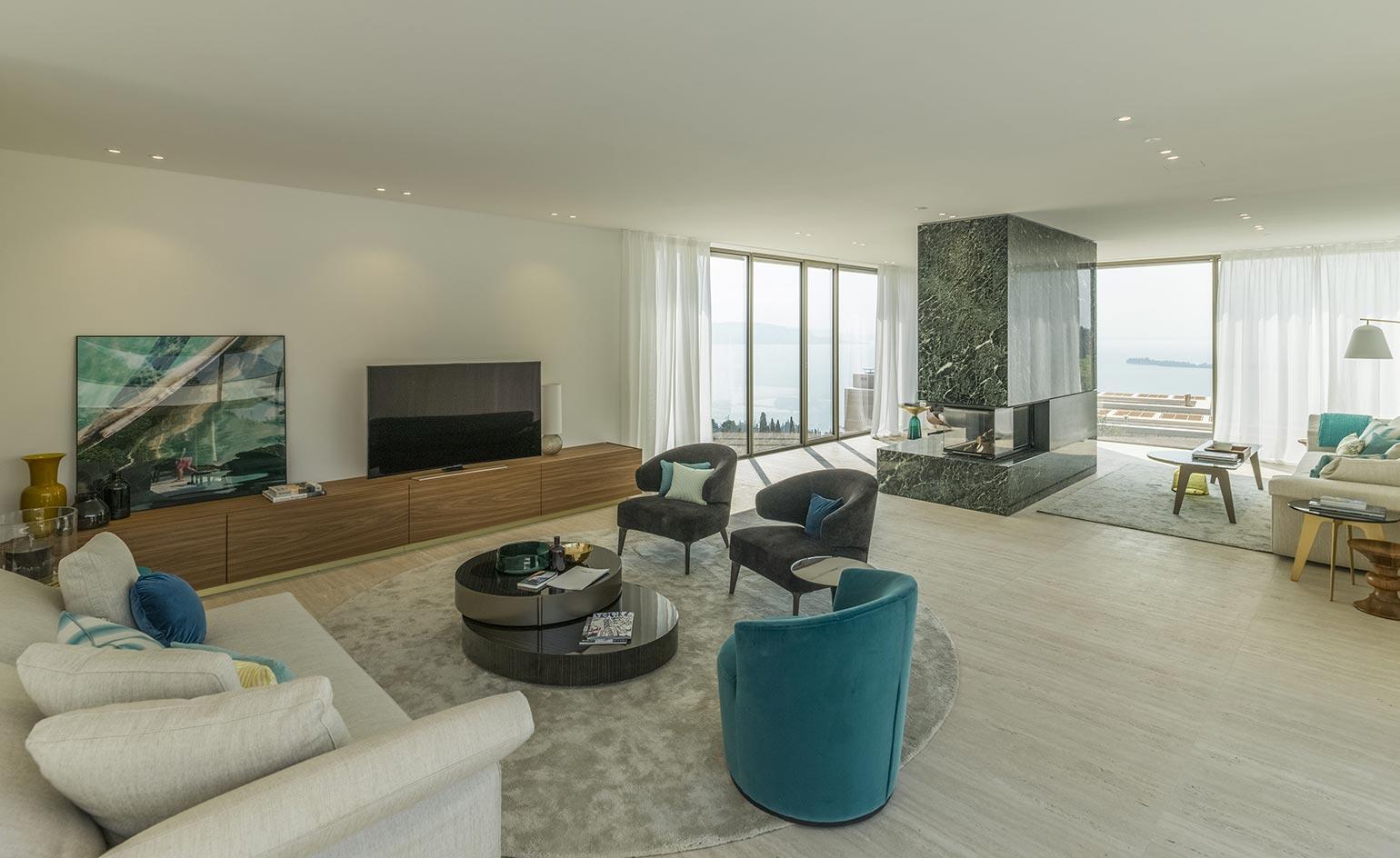
This way, common areas can be completely independent from private ones, making this villa perfect both for relaxing and entertaining.
Receive our daily digest of inspiration, escapism and design stories from around the world direct to your inbox.
Ellie Stathaki is the Architecture & Environment Director at Wallpaper*. She trained as an architect at the Aristotle University of Thessaloniki in Greece and studied architectural history at the Bartlett in London. Now an established journalist, she has been a member of the Wallpaper* team since 2006, visiting buildings across the globe and interviewing leading architects such as Tadao Ando and Rem Koolhaas. Ellie has also taken part in judging panels, moderated events, curated shows and contributed in books, such as The Contemporary House (Thames & Hudson, 2018), Glenn Sestig Architecture Diary (2020) and House London (2022).
-
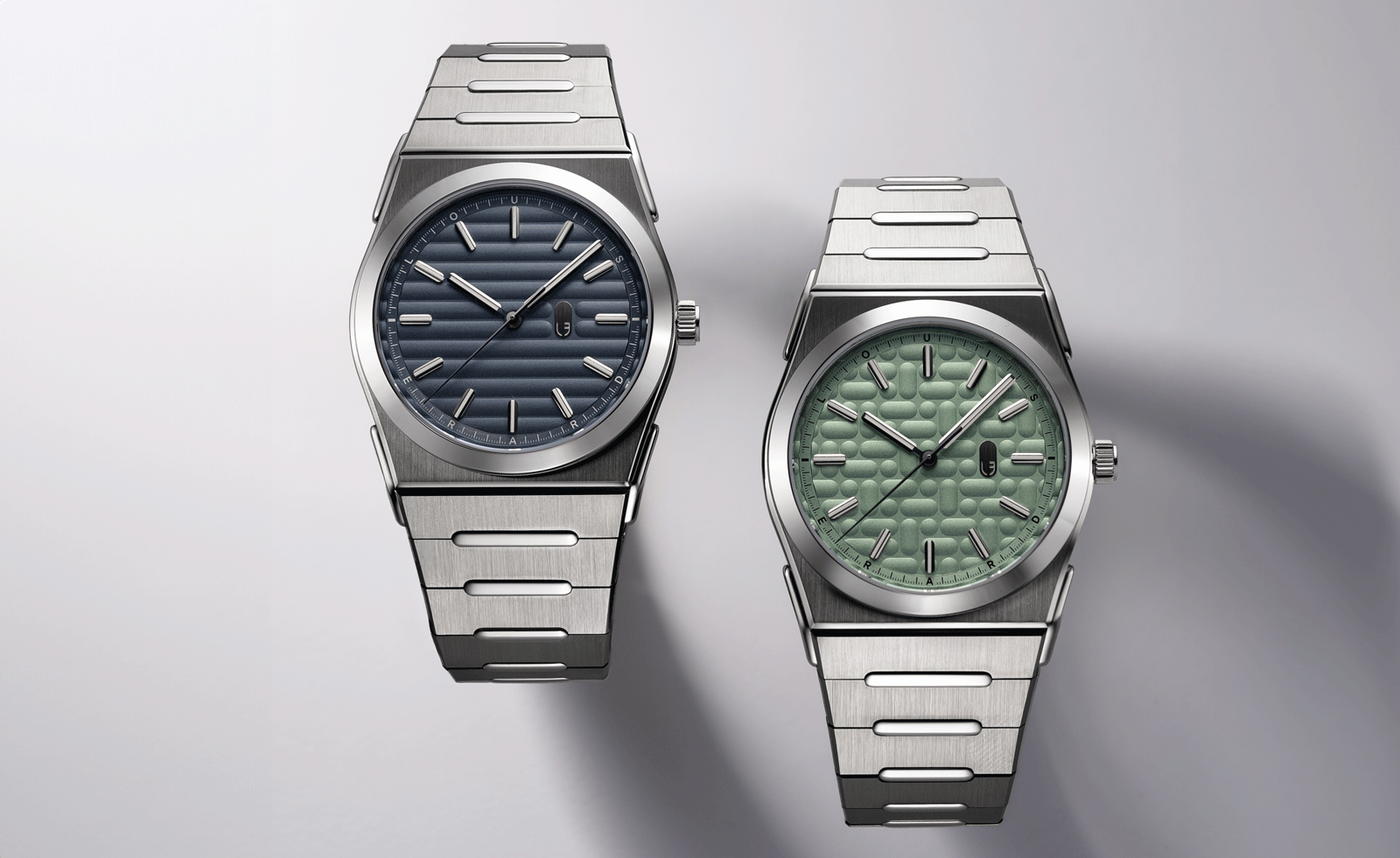 Five watch trends to look out for in 2026
Five watch trends to look out for in 2026From dial art to future-proofed 3D-printing, here are the watch trends we predict will be riding high in 2026
-
 Five destinations to have on your radar this year
Five destinations to have on your radar this yearThe cultural heavyweights worth building an itinerary around as culture and creativity come together in powerful new ways
-
 Dublin-based designer Cara Campos turns abandoned bicycles into sleekly minimal furniture pieces
Dublin-based designer Cara Campos turns abandoned bicycles into sleekly minimal furniture piecesWallpaper* Future Icons: Saudi-raised Irish/French designer Cara Campos' creative approach is rooted in reuse, construction and the lives of objects
-
 Modernist Palazzo Mondadori’s workspace gets a playful Carlo Ratti refresh
Modernist Palazzo Mondadori’s workspace gets a playful Carlo Ratti refreshArchitect Carlo Ratti reimagines the offices in Palazzo Mondadori, the seminal work by Brazilian master Oscar Niemeyer in Milan
-
 Wang Shu and Lu Wenyu to curate the 2027 Venice Architecture Biennale
Wang Shu and Lu Wenyu to curate the 2027 Venice Architecture BiennaleChinese architects Wang Shu and Lu Wenyu have been revealed as the curators of the 2027 Venice Architecture Biennale
-
 At the Holcim Foundation Forum and its Grand Prizes, sustainability is both urgent and hopeful
At the Holcim Foundation Forum and its Grand Prizes, sustainability is both urgent and hopefulThe Holcim Foundation Forum just took place in Venice, culminating in the announcement of the organisation's Grand Prizes, the projects especially honoured among 20 previously announced winning designs
-
 Carlo Ratti reflects on his bold Venice Architecture Biennale as it closes this weekend
Carlo Ratti reflects on his bold Venice Architecture Biennale as it closes this weekendThe Venice Architecture Biennale opens with excitement and fanfare every two years; as the 2025 edition draws to a close, we take stock with its curator Carlo Ratti and ask him, what next?
-
 Step inside Casa Moncler, the brand’s sustainable and highly creative Milanese HQ
Step inside Casa Moncler, the brand’s sustainable and highly creative Milanese HQCasa Moncler opens its doors in a masterfully reimagined Milanese industrial site, blending modern minimalism and heritage, courtesy of ACPV Architects Antonio Citterio Patricia Viel
-
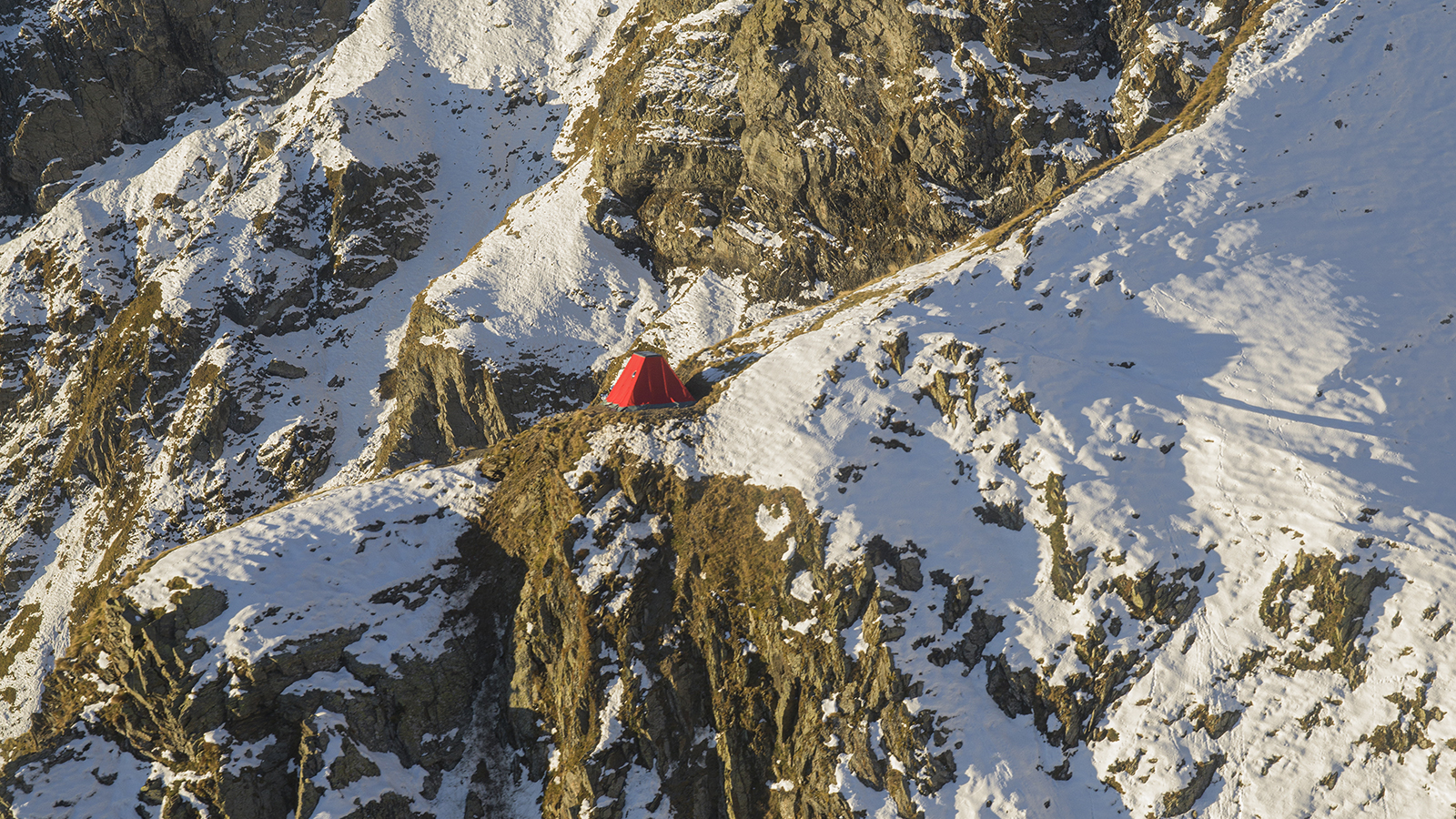 Aldo Frattini Bivouac is a mountain shelter, but not as you know it
Aldo Frattini Bivouac is a mountain shelter, but not as you know itA new mountain shelter on the northern Italian pre-Alp region of Val Seriana, Aldo Frattini Bivouac is an experimental and aesthetically rich, compact piece of architecture
-
 The 2026 Winter Olympics Village is complete. Take a look inside
The 2026 Winter Olympics Village is complete. Take a look insideAhead of the 2026 Winter Olympics, taking place in Milan in February, the new Olympic Village Plaza is set to be a bustling community hub, designed by Skidmore, Owings & Merrill
-
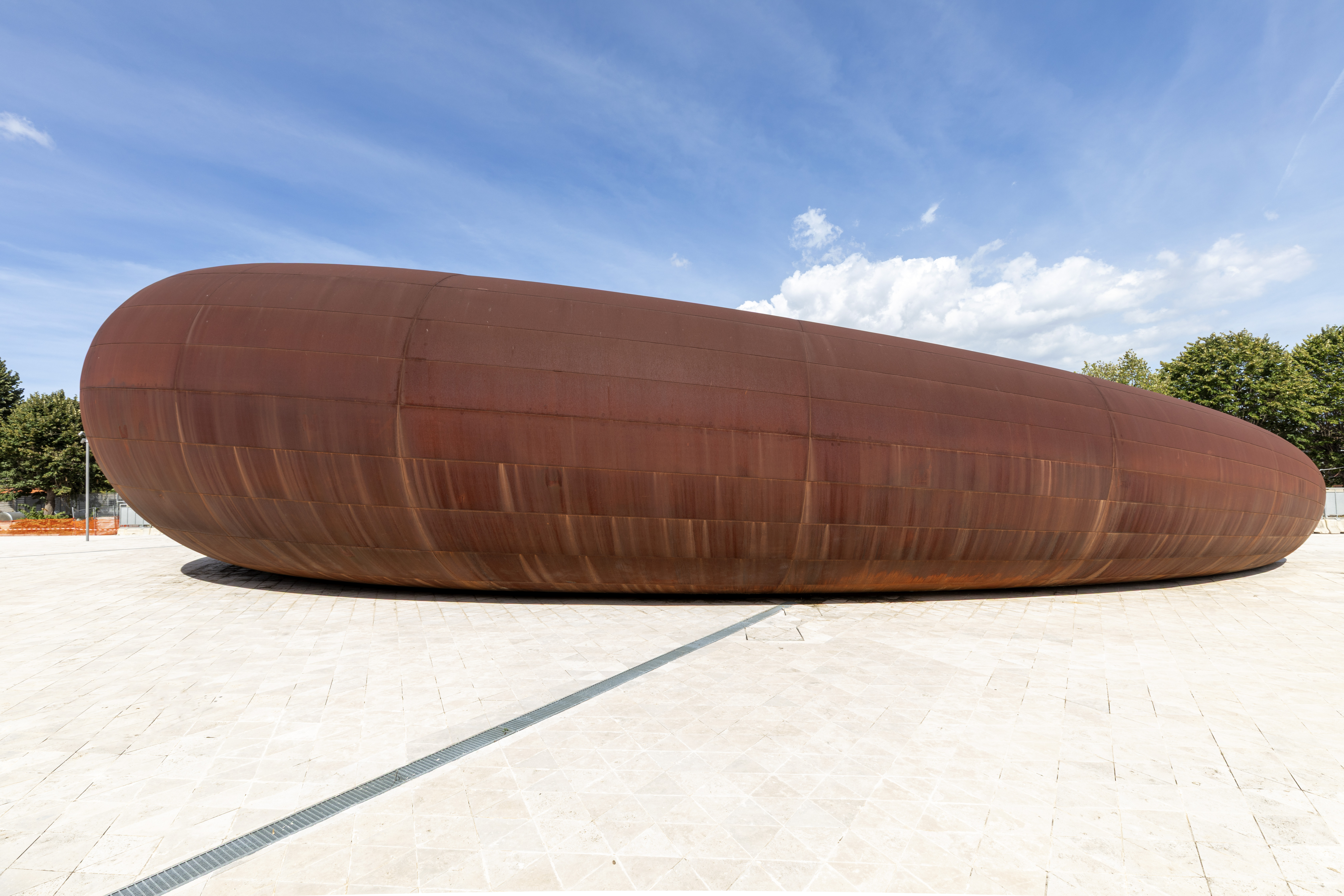 Anish Kapoor designs Naples station as a reflection of ‘what it really means to go underground’
Anish Kapoor designs Naples station as a reflection of ‘what it really means to go underground’A new Naples station by artist Anish Kapoor blends art and architecture, while creating an important piece of infrastructure for the southern Italian city